Whether you’re working with on-premises software, cloud solutions, or both, it’s important to ensure that your cybersecurity measures continue to evolve along with the newest threats.
Every year, companies like Sophos, who create IT security hardware and software, review the prior year’s malware attacks, breaches, and threats and report on what organisations need to do to be prepared in the coming year.
One of the first of these reports to come out is the Sophos 2021 Threat Report. In addition to revealing the most dangerous malware you need to look out for, it also provides insights into other areas of technology ecosystems that are being targeted.
Why is it important to review my IT security plan each year?
The threat landscape is continually changing. The types of IT assets that hackers targeted two years ago may have given way to new assets being targeted this year.
To avoid costly downtime and expensive malware and data breach remediation costs, it’s important to keep an eye on reports like this that “read the tea leaves” of emerging threats. An annual assessment of your current IT security plan to see where you may need upgrades to match these new threats keeps your business properly protected.
The cost of downtime for a business can range from ₤101,000 to ₤390,000 per hour.
After reviewing this latest threat report, our team has some insights to help inform your 2021 security upgrades.
1. Ransomware is Getting More Costly
Ransomware has its own category on the Sophos report due to the increase in frequency, sophistication, and cost of these attacks.
Ransomware costs have doubled between 2018 and 2019, and in the first quarter of 2020, the average enterprise ransom payment had jumped to ₤80,655.
Attacks have become more frequent both due to the pandemic and the fact that ransomware is now being adopted by large criminal cartels as a money-maker. They are organising attacks and improving attack efficiency.
It’s important to combat ransomware, which can be done with a multi-layered approach that includes things like:
- Email spam/phishing filters
- Use of multi-factor authentication on all logins
- DNS filtering to block malicious sites
- Employee cybersecurity awareness training
- Managed antivirus/antimalware
- Anti-ransomware security policies in platforms like Microsoft 365
2. Mobile Malware is a Big Threat
Hackers are increasingly attacking on non-traditional devices, such as smartphones and tablets. One of the methods being used to infect a mobile device with spyware or another type of malware is through malicious apps.
People are usually trusting of apps they find in approved app store, but it’s becoming harder for app stores to identify and kick these dangerous apps out.
Apps will usually be for something common like traffic reports or task management and will function as advertised. But in the background, they’re planting malicious code on a device.
It’s vital to ensure all mobile devices used for your business data are projected with a mobile anti-malware application.
3. COVID-19 Has Introduced Emerging Threats
The lockdowns and need to move to remote workforces during the pandemic have caused hackers to go after the common resources being used by work-from-home teams.
Two of the technologies being attacked with more frequency are:
- Virtual Private Networks (VPNs)
- Remote Desktop Protocol (RDP)
Use of advanced identity management, such as that which is geo-based, can be used to help protect these remote network technologies.
4. Poor Basic Security Hygiene is Still a Big Threat
The Sophos report also found that employees failing to follow basic cybersecurity best practices is still a major problem. This would include things like using strong passwords, adding screen locks to devices, keeping software updated, etc.
The report states that lack of following basic security hygiene “has been found to be at the root cause of many of the most damaging attacks we’ve investigated.”
Regular IT security training from a professional helps to improve cybersecurity hygiene and arm employees with the knowledge they need to thwart phishing attacks.
5. Adware is Now Being Used as a Trojan
Another finding was that previously undesirable, but not particularly dangerous, types of malware, like adware is now being weaponised.
Adware is now being used as a trojan for more malicious activities that mirror those of more dangerous forms of malware.
To ensure you’re protected from the newest threats and malware variants, it’s important to use a strong managed antivirus-anti-malware application that employs AI and machine learning. The use of whitelisting programs approved to execute commands also helps block any new trojans or zero-day malware.
Is Your Cloud & Network Security Prepared for 2021’s Threats?
NMX IT Solutions can help your Thames Valley area business with a full cybersecurity review and make suggestions for addressing any weaknesses in your IT security strategy.
Contact us today to schedule your consultation! Call 01628 232300 or reach out online.

